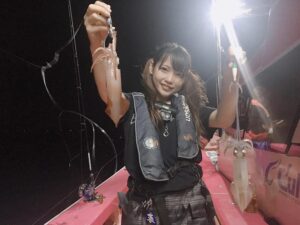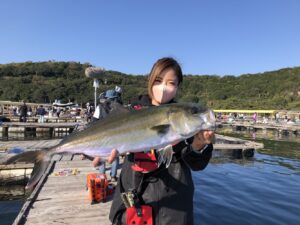Fishing in the Edo Period
About 200 years ago, Japan was in the Edo period. It is often said that this period made the basis of Japanese fishing (or fishing for leisure.)
In this period, the ruling government was stable and it brought a stable economy in Japan. Especially the people who received the benefit of this stable economy were in the city of Edo. Edo is the name of the area, current city center of Tokyo. The reason why this era is called the Edo period is that the government had the capital in this Edo area. People in Edo could afford to enjoy fishing for fun, because of this economic prosperity.
Additionally, what were important for fishing culture in Edo were samurais. The samurai had been a soldier or group of soldiers who was employed by the government or local governing groups. They had a very important role to protect their master in the case of wars and attacks of any kind. Samurais in the Edo period had some spare time, because there were not many wars from political instability. Though there were no wars to combat, they were given some part of governmental work and they could get stable income. These samurais made the fishing in Edo richer, technically and culturally.
As fishing for fun was becoming popular, it started to engage more people, other than samurais.
Let us see this wood print, published in 1804. The creator is the famous printer, Hokusai Katsushika.
In this article, please let us see the actual fishing in the Edo period, observing his picture in detail.
Target fish
One of the most popular target fish in the era was goby. In Japanese, it is called Haze, Acanthogobius flavimanus. It lives in shallow tidal flats, and feeds on ragworms and small crustaceans. In Tokyo bay, there were vast tidal flats, right in their water front. It was the best place for gobies and very accessible target fish. It can only grow up to 20 to 25 cm.
As there were thousands of them coming close to the shore, in summer to autumn, angler enjoyed catching as many fish as possible, sometimes hundreds. It gives you a nice shake when it bites. Another important attraction of this species is the taste. Fried goby is one of the popular ways to eat.
Fishing
Now, let us move on to fishing for gobies in the Edo period.
The tackle of this era was very different from the modern one.
First thing is a fishing rod. In the Edo period, there were no nylon lines nor carbon or grass fiber rods. The first and only choice was bamboo.
From the picture below, it seems the length was 3.6 or 4.5 m. You may ask why it is ‘3.6’ and not 3.5. The reason is that the traditional Japanese unit of length was 1.8 m (called 1 ken). For it, the standard lengths of fishing rods were 1.8 m, 3.6 m, and so on. You can see these lengths in some modern fishing rods in Japan. So, in the picture, they were using 2 ken or 2.5 ken length rods.
It must have been the bamboo rod like below.
The fishing line must have been the combination of braided horse tail and the thread made from silkworm gut. The thread of silkworm gut was originally used for medicine packing, being imported from China, but its effectiveness in fishing was discovered in the beginning of the Edo period, in Tokushima of Shikoku island.
What interests me is the rigs they use. It looks like a fork of a devil, but it should be a kind of special rig for goby.
Actually, another book explained about it, with a drawing.
This is the balancer rig. It can have two hooks on both ends. Additionally, it is explained that this balancer was made from the whisker of whales. I am sure it was a great material as it flexed well and it was light.
Showing how fishermans were dedicated to this goby fishing, there were many types of sinkers invented.
This goby fishing must have been very simple. They fished in the shallow area, probably up to 2.5 m. There were thousands of fish on the bottom of the sea. The bite signals were direct as the line length was short. I imagine the difference of the result, or number of fish, was from how quickly they repeat their hooking, picking fish up, baiting, and casting.
Some other things which shows how serious they were can be seen from these items on the boat.
The keep net was to eat their catch. The freshness of fish matters.
And the triangular dark colored thing is an umbrella. They might have expected rain, but they were out on the boat. If they really didn’t like to go out fishing in the rain, they would not have come out.
Another thing is the big luggage wrapped with the cloth. They might have a plan to spend their long day in the sea. And in this wrapping, there must have been a lot of food and drink to enjoy on a boat.
To go out fishing was one of the nice leisures to have a small party. Nice food and sake, or rice wine, were always the important part.
The popularity of fishing can be seen below, too. Can you find it in the picture?
Now you have a better idea about goby fishing in the Edo period.
Though there are less tidal flats in the Tokyo bay, we can still enjoy this fishing. Do you want to try it with a traditional tackle setup?


Cool to hear about early sportfishing history.
Thank you for your comment, Petter!